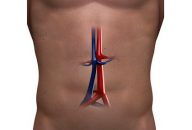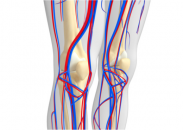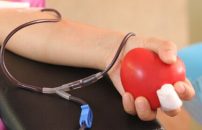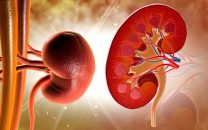E-cigarettes may bring about cardiac risk according to a new literature review soon to be published in J Am Coll Cardiol. The evidence on potential harm is not definitive, but some experts suggest caution in their use until there is more solid evidence. E-cigarettes have been advertised as a healthy alternative to traditional cigarettes and…
Several Features Define a Hostile Neck in AAA patients, but Only One Makes the Difference
Patients with infrarenal abdominal aortic aneurysm (AAA) and ≥ 30 mm neck diameter have 3 times higher risk of type 1A endoleak and 5 times higher risk of rupture at follow up after standard endovascular aneurysm repair (EVAR), as well as lower survival rate. This could tilt the scales against EVAR, or at best call…
Early Strut Coverage and Its Implications for Dual Antiplatelet Therapy
Optical coherence tomography (OCT)-guided drug-eluting stent implantation improves early strut coverage compared with angiography-guided angioplasty. No difference was observed in terms of strut coverage between permanent-polymer everolimus-eluting stents and bioresorbable-polymer biolimus-eluting stents. Short-term dual antiplatelet therapy may be feasible in selected patients with early strut coverage. This study sought to measure early strut coverage…
The Importance of Tibial Artery Patency in the Rechanneling of the Femoral Artery
After rechanneling occluded superficial femoro-popliteal arteries, interventional physicians are left with the question of how to proceed with infrapopliteal disease. This work (soon to be published in Eur J Vasc Endovasc Surg) shows us the importance of achieving patency in tibial arteries so as to obtain better mid-term outcomes. The gist is that, after an…
Predicting Coronary Angioplasty Benefits
Coronary angioplasty or percutaneous coronary intervention (PCI) reduces angina and improves quality of life in patients with stable ischemic cardiomyopathy, though the ORBITA study has shed new light on this. Meanwhile, we will assume this is indeed the case, until new studies either confirm or refute the above mentioned, controversial study. Either way, it is…
Less Bivalirudin and Minimal Use of Ultrasound for Puncture Is the Worldwide Trend in Transradial Access
A worldwide survey shows there is much room for improvement as regards transradial access procedures, particularly for the prevention of radial artery occlusion post-procedure. While in many places this has been a standard technique for some time now, other places are yet to evolve, and that is the result of this survey. In the past…
Can We Discontinue Betablockers after AMI?
Betablockers (BB) were the first drugs shown to effectively reduce events after acute MI. However, reperfusion and other secondary prevention drugs that came along after that have cast a shadow on betablockers’ original benefit. This study looked at betablocker discontinuation after acute MI in patients with no cardiac failure optimally treated with all recommended medication.…
Strategies to Reduce Acute Kidney Injury in Angioplasty
The title of this article leads us to think that we will find a list of things that we can do to reduce kidney injury. However, (unfortunately) sodium bicarbonate showed no benefit over saline and n-acetylcysteine showed no benefit over a placebo for the reduction of kidney damage after coronary angioplasty. Among the protective measures…
Aspirin, Bleeding and Cardiovascular Events in Healthy Elderly
The ASCEND and ARRIVE trials -presented at the European Cardiology Congress and published in The New England Journal of Medicine (NEJM) and The Lancet respectively- have put against the ropes the indication of aspirin in the context of primary prevention. The ASPREE trial, recently published in the NEJM, appears to have definitely overthrown aspirin, since…
Coronary Disease in Diabetes: Diabetic Patients Have Much Greater Plaque Progression
Patients with diabetes mellitus experience significantly greater plaque progression, particularly regarding adverse plaque. Male sex and baseline plaque volume >75% were identified as independent risk factors for plaque progression; the latter actually tripled the risk. This study with tomographic follow-up sought to determine the rate and extent of plaque progression, changes in plaque features, and…









